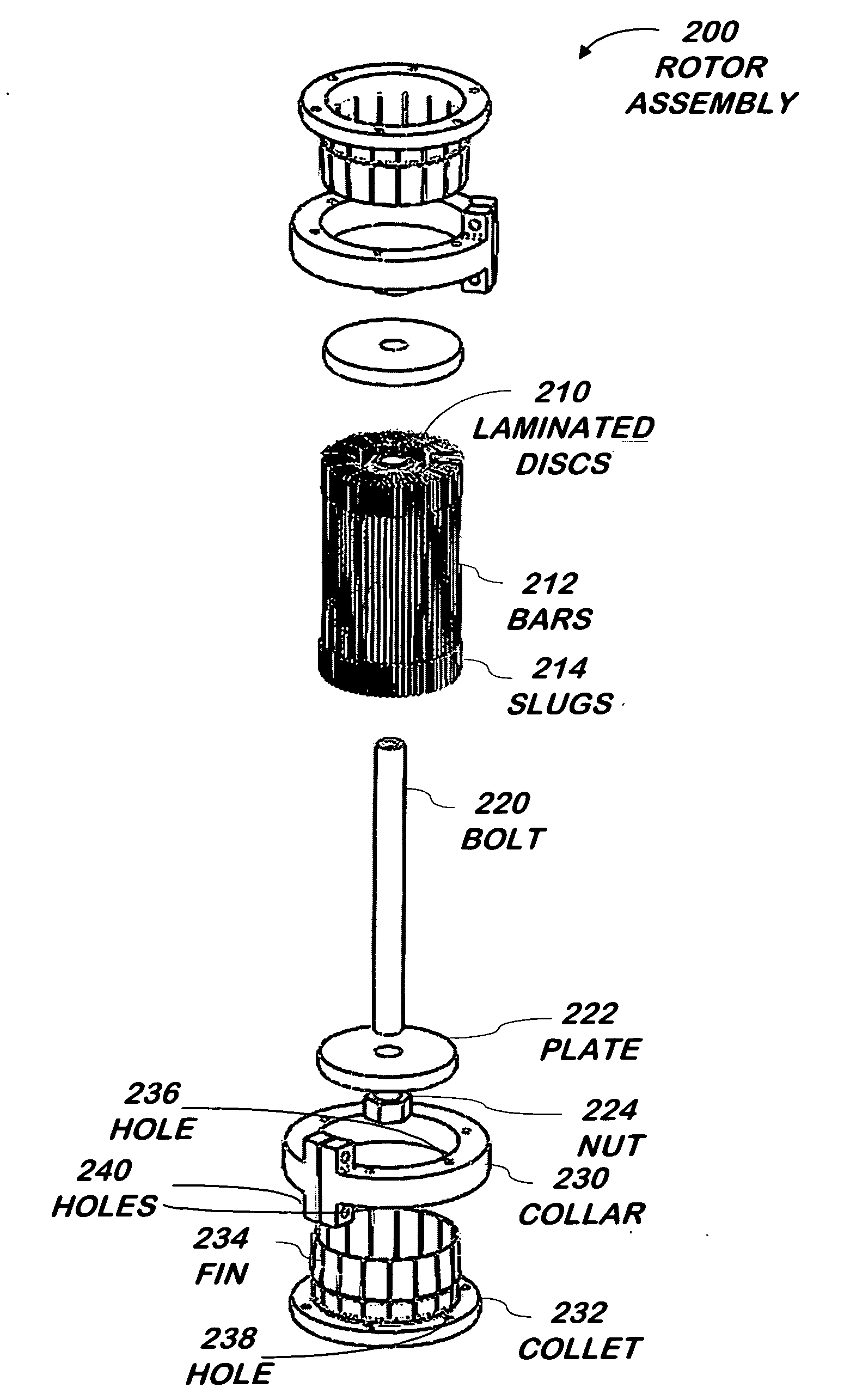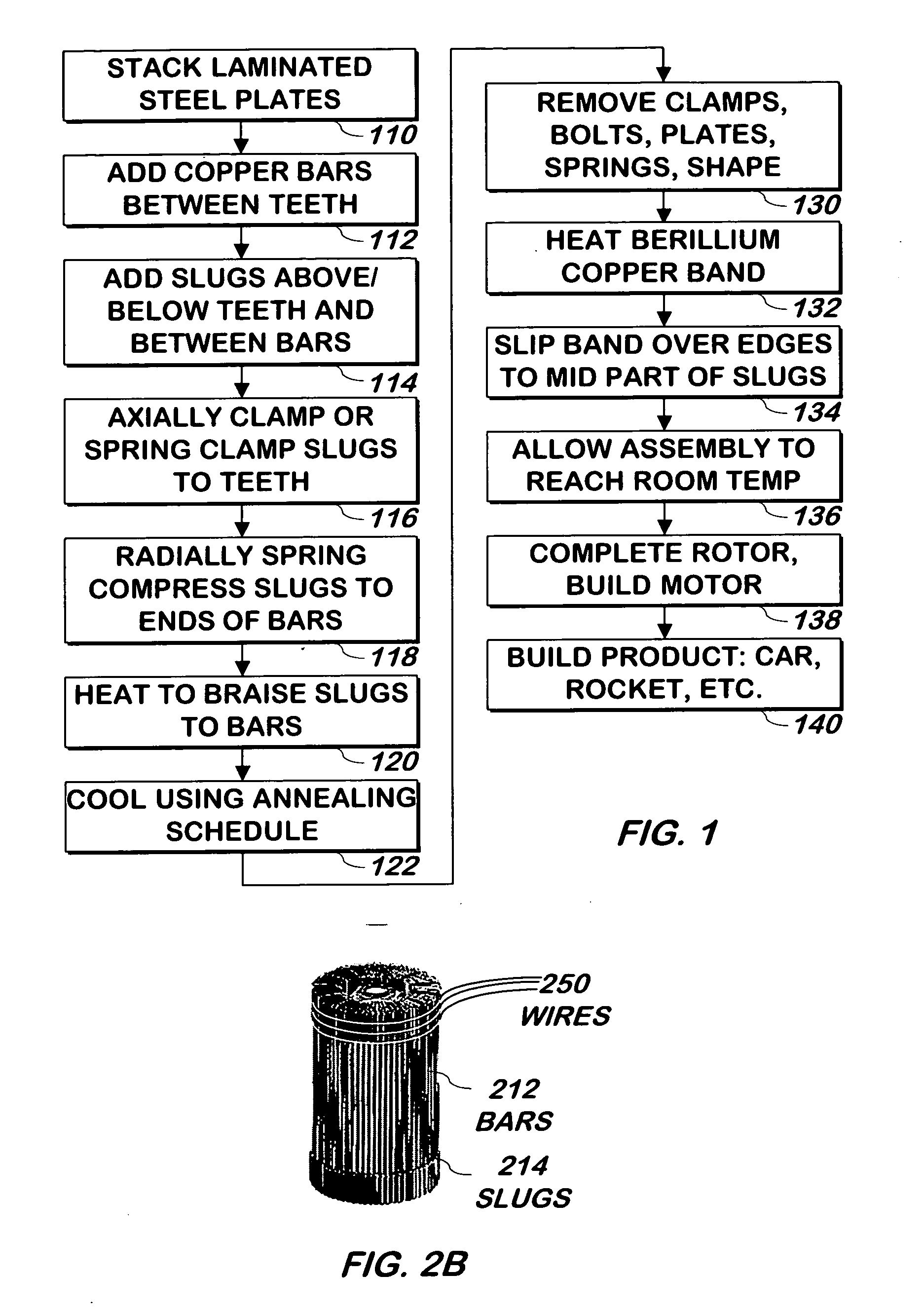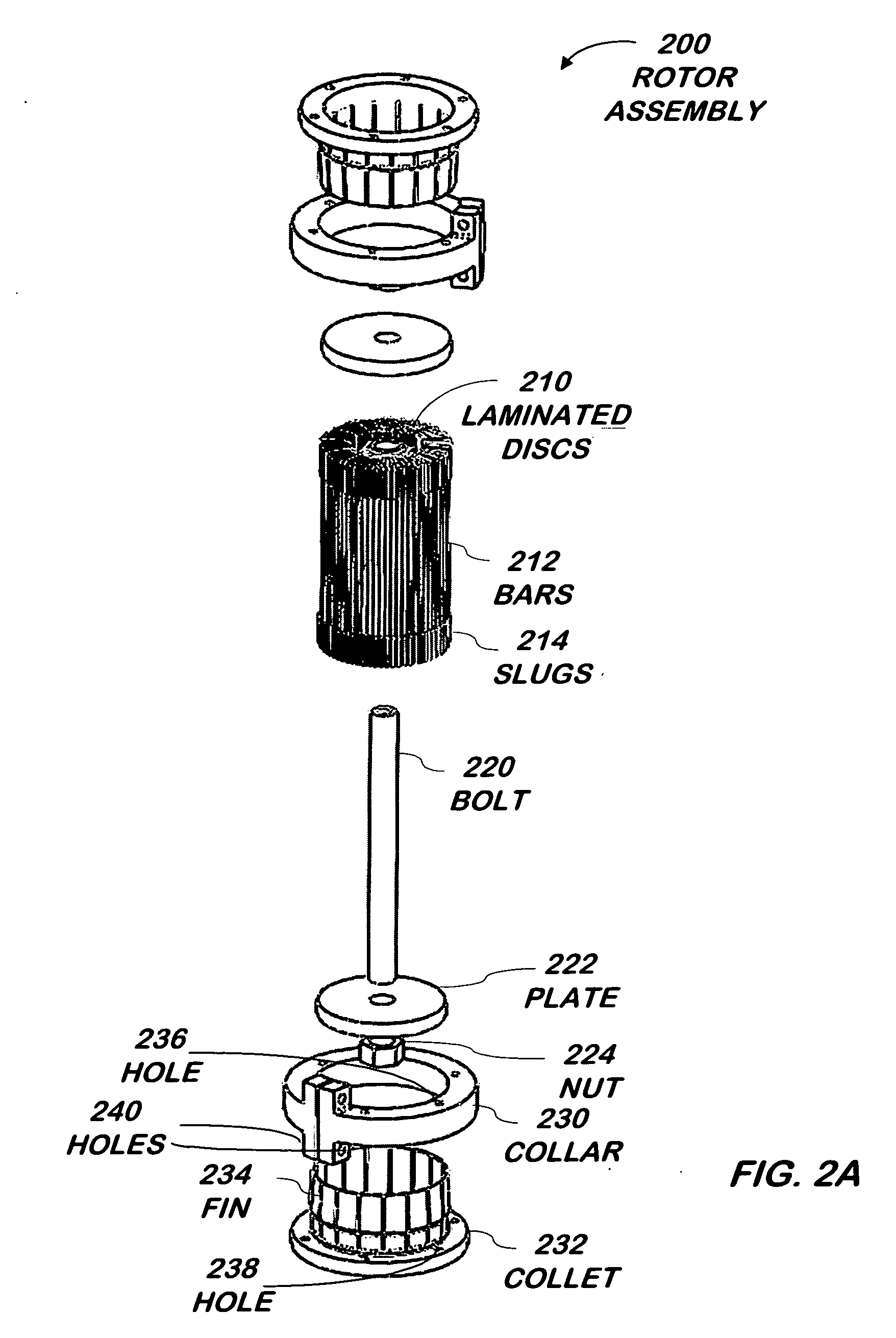System and method for an efficient rotor for an electric motor
a technology of efficient rotor and electric motor, which is applied in the manufacture of stator/rotor bodies, slip-ring manufacturing, and solid insulation. it can solve the problems of inability to achieve the same resistance of conventional brazing techniques used for copper, inability to cast copper, and inability to meet the requirements of reducing the resistance of electrical connections. , to achieve the effect of reducing the electrical resistance, minimizing the electrical resistance, and tightening the toleran
- Summary
- Abstract
- Description
- Claims
- Application Information
AI Technical Summary
Benefits of technology
Problems solved by technology
Method used
Image
Examples
Embodiment Construction
[0020]FIG. 1 is a flowchart illustrating a method of assembling an electric motor according to one embodiment of the present invention. FIG. 2A is a diagram of an exploded view of a rotor according to one embodiment of the present invention. FIG. 2B is a diagram of a portion of the rotor of FIG. 2A according to another embodiment of the present invention. The method of FIG. 1 is described alongside the diagrams of FIGS. 2A and 2B, however, the rotor and method may be practiced independently of one another: e.g. the method of FIG. 1 may be used on a rotor different from that shown in FIG. 2A or 2B and vice versa.
[0021]Referring now to FIGS. 1, 2A and 2B, laminated steel discs 210 are stacked 110. A representative disc 210 is shown in more detail in FIG. 3. Referring now to FIGS. 1, 2A, 2B, and 3, in one embodiment, each of the discs 210 is substantially round in shape, and each of the discs has teeth 310 radiating outwards from a central portion. In one embodiment, the teeth 310 have...
PUM
| Property | Measurement | Unit |
|---|---|---|
| length | aaaaa | aaaaa |
| height | aaaaa | aaaaa |
| radial force | aaaaa | aaaaa |
Abstract
Description
Claims
Application Information
 Login to View More
Login to View More - R&D
- Intellectual Property
- Life Sciences
- Materials
- Tech Scout
- Unparalleled Data Quality
- Higher Quality Content
- 60% Fewer Hallucinations
Browse by: Latest US Patents, China's latest patents, Technical Efficacy Thesaurus, Application Domain, Technology Topic, Popular Technical Reports.
© 2025 PatSnap. All rights reserved.Legal|Privacy policy|Modern Slavery Act Transparency Statement|Sitemap|About US| Contact US: help@patsnap.com



